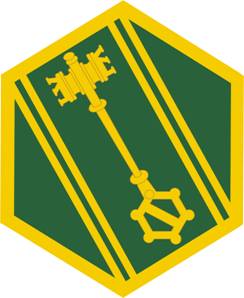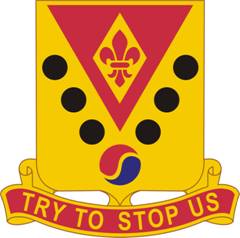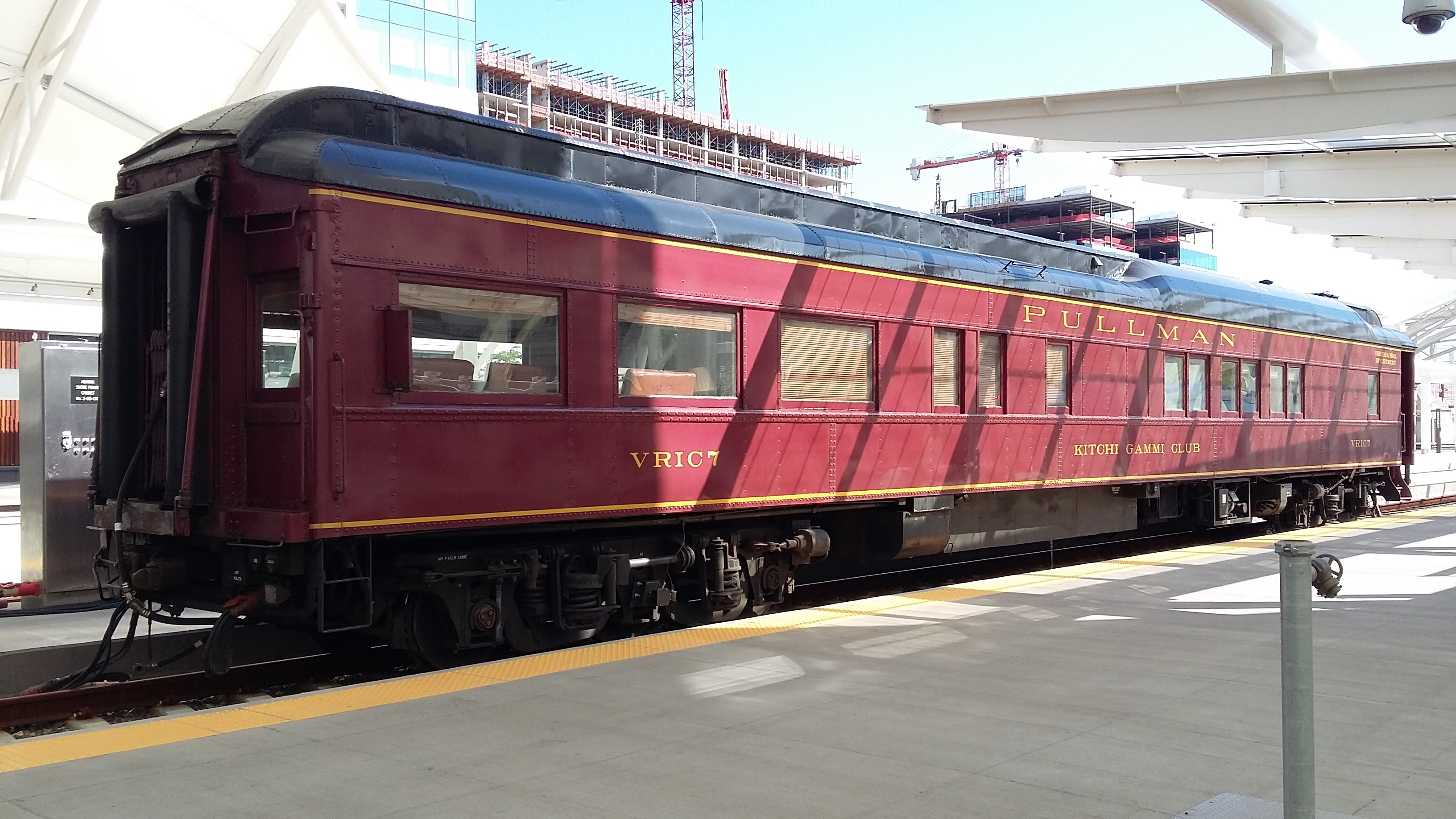|
1st Battalion, 206th Field Artillery Regiment
The 206th Field Artillery Regiment is a United States artillery regiment, currently represented in the Arkansas Army National Guard by the 1st Battalion, 206th Field Artillery, Headquartered at Russellville, Arkansas. The 1–206th FA is an element of the 39th Infantry Brigade Combat Team. The regiment's history begins with the creation of the 3rd Arkansas Infantry in 1917 as a part of the expansion of the guard following the Mexican Expedition and just before World War I. The unit was reorganized for World War I as the 141st Machine Gun Battalion, an element of the 39th Infantry Division. The unit deployed to France but did not see combat before the end of the war. Between World War I and II, the unit was reorganized as the 206th Coast Artillery (Anti-Aircraft) and many of its units were stationed at state colleges. The 206th CA was mobilized for World War II and participated in the Battle of Dutch Harbor, Alaska, on 3 and 4 June 1942. Following World War II the unit was reorgani ... [...More Info...] [...Related Items...] OR: [Wikipedia] [Google] [Baidu] |
Army National Guard
The Army National Guard (ARNG), in conjunction with the Air National Guard, is an organized Militia (United States), militia force and a Reserve components of the United States Armed Forces, federal military reserve force of the United States Army. They are simultaneously part of two different organizations: the Army National Guard of each state, most territories, and the District of Columbia (also referred to as the ''Militia of the United States''), and the Army National Guard of the United States (as part of the federalized National Guard (United States), National Guard). The Army National Guard is divided into subordinate units stationed in each U.S. state and territory, as well as the District of Columbia, operating under their respective governors and governor-equivalents. The foundation for what became the Army National Guard occurred in the city of Salem, Massachusetts, Salem, Massachusetts, in 1636, the first time that a regiment of militia drilled for the common defens ... [...More Info...] [...Related Items...] OR: [Wikipedia] [Google] [Baidu] |
Division Artillery
Artillery is a class of heavy military ranged weapons that launch munitions far beyond the range and power of infantry firearms. Early artillery development focused on the ability to breach defensive walls and fortifications during sieges, and led to heavy, fairly immobile siege engines. As technology improved, lighter, more mobile field artillery cannons developed for battlefield use. This development continues today; modern self-propelled artillery vehicles are highly mobile weapons of great versatility generally providing the largest share of an army's total firepower. Originally, the word "artillery" referred to any group of soldiers primarily armed with some form of manufactured weapon or armor. Since the introduction of gunpowder and cannon, "artillery" has largely meant cannons, and in contemporary usage, usually refers to Shell (projectile), shell-firing Field gun, guns, howitzers, and Mortar (weapon), mortars (collectively called ''barrel artillery'', ''cannon artil ... [...More Info...] [...Related Items...] OR: [Wikipedia] [Google] [Baidu] |
Coast Artillery Corps
The U.S. Army Coast Artillery Corps (CAC) was an Corps#Administrative corps, administrative corps responsible for coastal defence and fortification, coastal, harbor, and anti-aircraft Seacoast defense in the United States, defense of the United States and its possessions between 1901 and 1950. The CAC also operated heavy and railway artillery during World War I. History As early as 1882 the need for heavy fixed artillery for seacoast defense was noted in Chester A. Arthur's Second Annual Message to Congress where he noted: In 1885 the Board of Fortifications, Endicott Board was convened under the subsequent Grover Cleveland administration, chaired by Secretary of War William Crowninshield Endicott. This board recommended a large-scale program of harbor defenses at 29 ports, including 12-inch gun M1895, guns, 12-inch coast defense mortar, mortars, and Submarine mines in United States harbor defense, mine fields. Most of their recommendations were implemented and new defenses ... [...More Info...] [...Related Items...] OR: [Wikipedia] [Google] [Baidu] |
Haute-Marne
Haute-Marne (; English: Upper Marne) is a department in the Grand Est region of Northeastern France. Named after the river Marne, its prefecture is Chaumont. In 2019, it had a population of 172,512.Populations légales 2019: 52 Haute-Marne INSEE History Haute-Marne is one of the original 83 departments created during the on March 4, 1790. It was created from parts of the of |
154th Infantry Regiment
The 154th Regiment (Regional Training Institute) ("Third Arkansas") is a training regiment/institute of the Army National Guard. Most of its history before the 1990s can be traced to the 154th Infantry Regiment which was created from the 1st and 2nd Battalions of the 3rd Arkansas Infantry Regiment, Arkansas National Guard, in 1917. The Regiment was activated as for World War I, re-designated as the 154th Infantry and shipped to France as a part of the 39th Infantry Division, but became a replacement regiment and its personnel were reassigned to other American Expeditionary Force (AEF) units. The 154th Infantry Regiment was never reactivated in the Arkansas National Guard following World War I. However, by 1999, it had been reformed as a Regiment (Regional Training Institute) of the Mississippi Army National Guard. History Activation of the 3rd Arkansas Infantry Regiment The United States declared war on Germany 6 April 1917 less than two months after the last Arkansas Natio ... [...More Info...] [...Related Items...] OR: [Wikipedia] [Google] [Baidu] |
142nd Field Artillery Regiment
The 142nd Field Artillery Regiment ("Second Arkansas") is a United States Army field artillery regiment currently represented in the Arkansas Army National Guard by the 1st Battalion, 142nd Field Artillery, headquartered in Bentonville, Arkansas; 2nd Battalion, 142nd Field Artillery, headquartered in Barling, Arkansas; and Battery F (Target Acquisition), 142nd Field Artillery stationed in Fayetteville, Arkansas, elements of the 142nd Field Artillery Brigade which is headquartered in Fayetteville, Arkansas. The regiment was created in 1917 from the former 2nd Arkansas Infantry. The 142nd Field Artillery shipped to France during World War I but did not see combat before the cessation of hostilities. The regiment was activated for World War II, but its battalions were redesignated as separate battalions, 1–142nd became the 936th Field Artillery Battalion, the 2–142nd became the 937th Field Artillery Battalion. The battalion's served throughout the European Theater of Operation ... [...More Info...] [...Related Items...] OR: [Wikipedia] [Google] [Baidu] |
153rd Infantry Regiment
The 153d Infantry Regiment (First Arkansas) is a United States infantry regiment, currently represented in the Arkansas Army National Guard by the 1st Battalion, 153rd Infantry, headquartered at Malvern, Arkansas, and 2nd Battalion, 153rd Infantry, headquartered at Searcy, Arkansas, elements of the 39th Brigade Combat Team. The regiment was also represented by the 3rd Battalion, 153rd Infantry Regiment headquartered at Warren, Arkansas until that unit was deactivated on 5 September 2005. The regiment was activated as the 1st Arkansas Volunteer Infantry for the Spanish–American War, but did not deploy overseas. The regiment was activated for World War I, redesignated as the 153rd Infantry and shipped to France as a part of the 39th Division, but became a replacement division and personnel were reassigned to other AEF units. The regiment was activated for World War II and deployed to the Aleutian Islands, participating in the Aleutian Islands Campaign. Recently, elements of t ... [...More Info...] [...Related Items...] OR: [Wikipedia] [Google] [Baidu] |
Company I, 141st Machine Gun Battalion, 1918
A company, abbreviated as co., is a Legal personality, legal entity representing an association of people, whether Natural person, natural, Legal person, legal or a mixture of both, with a specific objective. Company members share a common purpose and unite to achieve specific, declared goals. Companies take various forms, such as: * voluntary associations, which may include nonprofit organizations * List of legal entity types by country, business entities, whose aim is generating profit * financial entities and banks * programs or Educational institution, educational institutions A company can be created as a legal person so that the company itself has limited liability as members perform or fail to discharge their duty according to the publicly declared Incorporation (business), incorporation, or published policy. When a company closes, it may need to be Liquidation, liquidated to avoid further legal obligations. Companies may associate and collectively register themselves ... [...More Info...] [...Related Items...] OR: [Wikipedia] [Google] [Baidu] |
Pullman (car Or Coach)
In the United States, Pullman was used to refer to railroad sleeping cars that were built and operated on most U.S. railroads by the Pullman Company (founded by George Pullman) from 1867 to December 31, 1968. Other uses Pullman also refers to railway dining cars in Europe that were operated by the Pullman Company, or lounge cars operated by the Compagnie Internationale des Wagons-Lits. Specifically, in Great Britain, ''Pullman'' refers to the lounge cars operated by the British Pullman Car Company. The nickname ''Pullman coach'' was used in some European cities for the first long (four-axle) electric tramcars whose appearance resembled the Pullman railway cars and that were usually more comfortable than their predecessors. Such coaches ( rus, пульмановский вагон, pul'manovsky vagon) ran in Kyiv from 1907 and in Odessa from 1912. In the 1920s, tramcars nicknamed ''Pullmanwagen'' in German ran in Leipzig, Cologne, Frankfurt and Zürich.Hans Bodmer. ''Das Tram in Z ... [...More Info...] [...Related Items...] OR: [Wikipedia] [Google] [Baidu] |
Robinson Maneuver Training Center
Robinson Maneuver Training Center (Camp Robinson) a facility located at North Little Rock, Arkansas, which houses the Joint Forces Headquarters, Arkansas National Guard, the Headquarters, Arkansas Air National Guard, Headquarters, 77th Combat Aviation Brigade, Headquarters, 87th Troop Command, Camp Pike (United States Armed Forces Reserve Complex), and is home to three Premier Training Centers, the National Guard Professional Education Center (PEC), the Guard Marksmanship Training Center (NGMTC) and the 233d Regiment (Regional Training Institute). History Established on 18 July 1917, the facility was originally named Camp Pike in honor of United States Army Brigadier General Zebulon Montgomery Pike. Camp construction was supervised by Major John R. Fordyce, the son of Samuel W. Fordyce. It was used for the mobilization of the 87th Division during World War I. From 1919 to 1921, Camp Pike was the home of the 3rd Division. In 1921, the 3rd Division was relocated to Camp Lewis i ... [...More Info...] [...Related Items...] OR: [Wikipedia] [Google] [Baidu] |
Camp Beauregard
Camp Beauregard is a U.S. Army installation located northeast of Pineville, Louisiana, primarily in Rapides Parish, but also extending northward into Grant Parish. It is operated and owned by the Louisiana National Guard as one of their main training areas. The current base covers and is home to many different units and elements of the Louisiana Army National Guard. The camp was named for Louisiana native and Confederate General Pierre Gustave Toutant Beauregard. Camp Beauregard is one of ten U.S. Army installations named for former Confederate Generals. The beginnings of the existing post date back to 1917, when the War Department authorized the building of more than thirty camps around the country to train troops for World War I. The 17th Division was organized in 1918 as a National Army division for World War I. The 17th Division included the 33rd Infantry Brigade (September 1918-February 1919), with the 5th and 83rd Regiments, and the 34th Brigade with the 29th and 8 ... [...More Info...] [...Related Items...] OR: [Wikipedia] [Google] [Baidu] |
Alexandria, Louisiana
Alexandria is the ninth-largest city in the state of Louisiana and is the parish seat of Rapides Parish, Louisiana, United States. It lies on the south bank of the Red River in almost the exact geographic center of the state. It is the principal city of the Alexandria metropolitan area (population 153,922) which encompasses all of Rapides and Grant parishes. Its neighboring city is Pineville. In 2010, the population was 47,723, an increase of 3 percent from the 2000 census. History Located along the Red River, the city of Alexandria was originally home to a community which supported activities of the adjacent French trader outpost of ''Post du Rapides''. The area developed as an assemblage of traders, Caddo people, and merchants in the agricultural lands bordering the mostly unsettled areas to the north and providing a link from the south to the El Camino Real and then larger settlement of Natchitoches, the oldest permanent settlement in the Louisiana Purchase. Ale ... [...More Info...] [...Related Items...] OR: [Wikipedia] [Google] [Baidu] |








